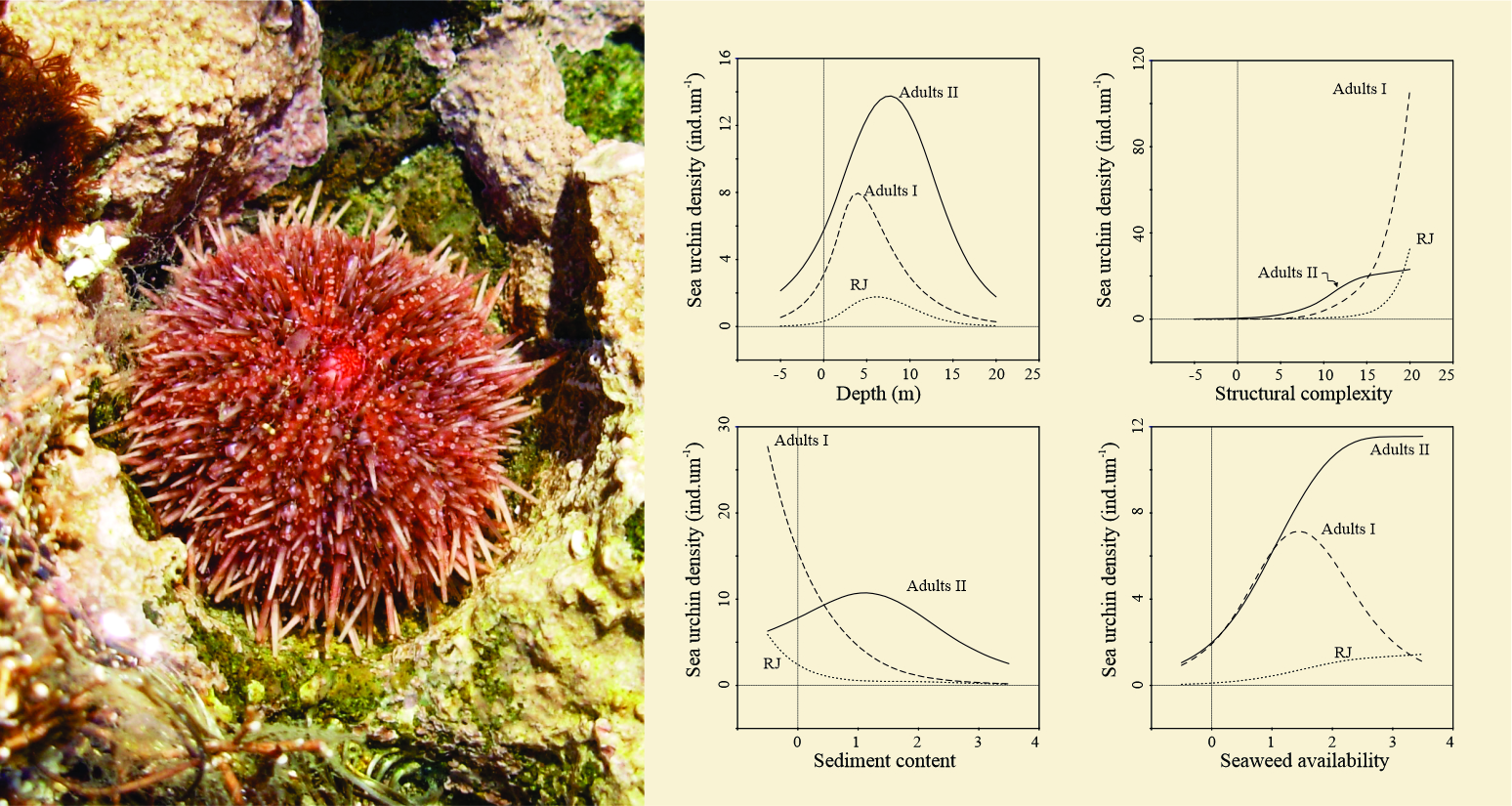Vertical population metrics of Pseudechinus magellanicus in central Patagonia
The sea urchin Pseudechinus magellanicus is a key species in nearshore ecosystems of southern Argentina and Chile, yet its population dynamics remain poorly understood. This study examines its size structure, abundance, and spatial distribution along a depth gradient in central Patagonia. Results show that habitat complexity and depth strongly influence population patterns: juveniles dominate shallow zones with complex habitats, while larger individuals prefer deeper, less structured areas. Sedimentation negatively affected the vertical distribution of early life stages. Although aggregation was the dominant spatial pattern, sea urchins showed a more random distribution within kelp forests. These findings highlight the influence of habitat complexity and depth on the population dynamics of P. magellanicus and its potential use as an indicator of coastal ecosystem health.

Read the full article, here

